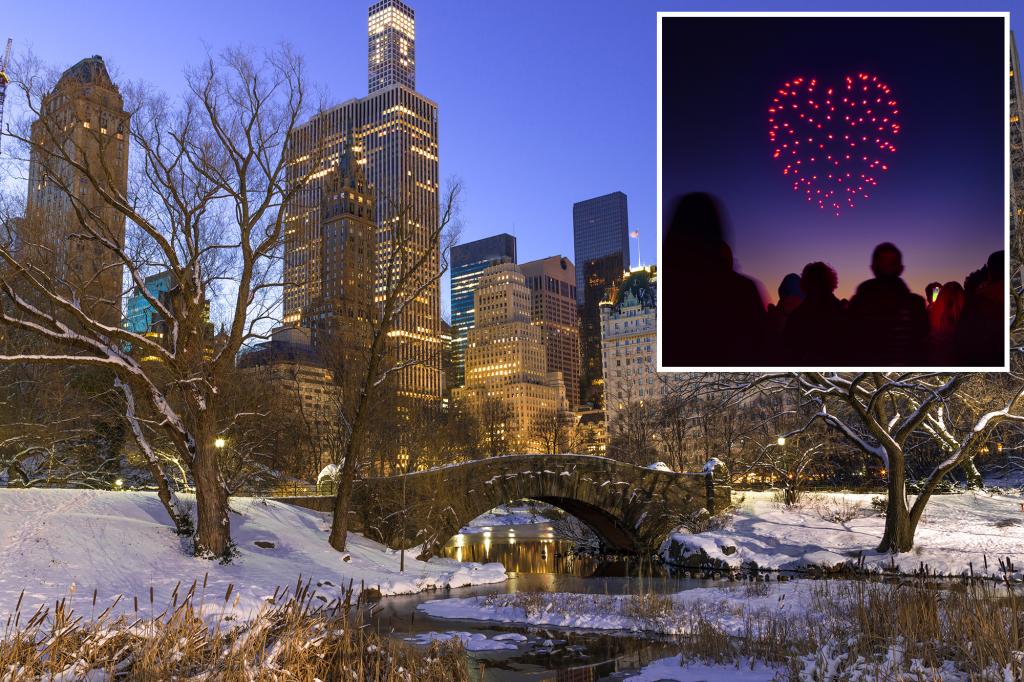The New Year’s Eve sky over New York City’s Central and Prospect Parks will be illuminated not by traditional fireworks, but by a fleet of 500 drones, choreographed to create a dazzling spectacle for the New York Road Runner Club’s annual midnight run. This innovative approach comes as a direct response to the severe drought conditions that gripped the tri-state area earlier in the year, prompting authorities to temporarily suspend fireworks displays due to the heightened risk of fire hazards. The decision underscores a growing trend of prioritizing environmental responsibility and public safety in large-scale events, showcasing how technology can offer exciting alternatives to traditional celebrations.
The drone light show, specifically designed for the runners participating in the midnight run, will be visible at the 72nd Street traverse in Central Park, just south of the Bethesda Fountain. Organizers have emphasized that the display is not intended for a broader public audience and anticipate the visual impact will be contained within the event area. This targeted approach aims to enhance the experience for the runners while minimizing any potential disruption to surrounding communities. It also allows the event to proceed without contributing to the very environmental concerns that led to the fireworks ban. The Prospect Park Alliance has also embraced this innovative approach, choosing to replace its traditional fireworks display with a drone show, further solidifying the shift away from pyrotechnics in light of the recent drought conditions.
The decision to adopt drone shows marks a significant departure from traditional New Year’s Eve celebrations, highlighting the growing influence of technology in shaping public events. Drone light shows offer a unique blend of artistry and technological precision, capable of creating intricate aerial displays that rival the visual impact of fireworks. Furthermore, they significantly reduce the environmental footprint associated with traditional pyrotechnics, eliminating the air and noise pollution, as well as the risk of fire hazards, which are particularly concerning in drought-prone areas. This shift towards drone-based entertainment reflects a broader societal awareness of environmental responsibility and a growing preference for sustainable celebratory practices.
While New York City embraces the technological marvel of drone light shows, a different narrative unfolds in neighboring New Jersey, where a series of unexplained drone sightings has sparked public concern and investigations by authorities. The incidents at Joint Base McGuire-Dix-Lakehurst, where several drone incursions were reported and addressed in the past year, underscore the complex and evolving relationship between drones, public safety, and national security. The deployment of detection technology by the Department of Homeland Security and the FBI highlights the serious attention being given to these incidents and the ongoing efforts to identify and understand the nature of these drone activities.
Interestingly, the mystery surrounding the New Jersey drone sightings is further complicated by the acknowledgment that many reported sightings are likely misidentified manned aircraft or legally operating drones. This ambiguity underscores the challenges in accurately identifying and tracking drone activity, especially in a rapidly evolving technological landscape. It also emphasizes the need for public education and improved reporting mechanisms to distinguish between legitimate drone operations and potential security threats. The contrasting scenarios of New York’s planned drone shows and New Jersey’s unexplained sightings highlight the diverse applications of drone technology and the complex regulatory and public perception challenges that accompany their increasing presence in our airspace.
The move towards drone light shows for New Year’s Eve celebrations represents a significant step towards more sustainable and environmentally conscious event planning. It showcases how technological advancements can offer creative alternatives to traditional practices while mitigating environmental risks. As drone technology continues to evolve, we can expect to see even more sophisticated and spectacular displays in the future, potentially transforming the landscape of public entertainment and further reducing reliance on environmentally harmful practices. The contrasting experiences of New York and New Jersey, however, also underscore the importance of responsible drone usage, regulation, and public awareness to ensure the safe and beneficial integration of this technology into our communities.

